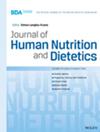Packed Lunch Provision and Consumption in Early Years Settings in Sheffield: A Cross-Sectional Study
Abstract
Introduction
In 2024, 95% of 3–4-year-old children in England attended early years settings (EYS). This study aimed to estimate energy and nutrient content of packed lunches provided for and consumed by children attending EYS, along with food type, cost and level of processing and whether these differed by area deprivation.
Methods
An observational cross-sectional weighed intake and nutrient analysis of food and drinks in packed lunches provided to and consumed by children attending eight EYS over 5 days. Food type, packaging and processing were coded and lunch costs calculated.
Results
A total of 67 children ate 185 packed lunches. Lunches included fruit (76.2%) more often than vegetables (38.9%). Lunches in areas of higher deprivation less frequently contained fruit (p = 0.003) or vegetables (p < 0.001), and more frequently contained meat products (p < 0.001), savoury snacks (p < 0.001), cakes/biscuits (p = 0.038) and confectionery (p < 0.001). Use of pre-packaged foods was common (40.1% items), and ultra-processed foods provided 65.5% energy. Overall, lunches provided sufficient fibre and micronutrients, but high protein and excess energy, fat, saturated fat, free sugars and sodium. Provision of most nutrients varied by area deprivation, but consumption in areas of higher deprivation was only higher for free sugars (p = 0.002) and lower for fibre (p = 0.003) and vitamin C (p = 0.003). Median packed lunch cost was £1.26, with no difference by area deprivation (p = 0.422). Healthier lunches were cheaper than less healthy lunches (p < 0.001).
Conclusions
Use of pre-packed, ultra-processed foods was high, and provision of vegetables low. Lunches were high in sodium and free sugars, with less healthy lunches provided in areas of higher deprivation.

 求助内容:
求助内容: 应助结果提醒方式:
应助结果提醒方式:


